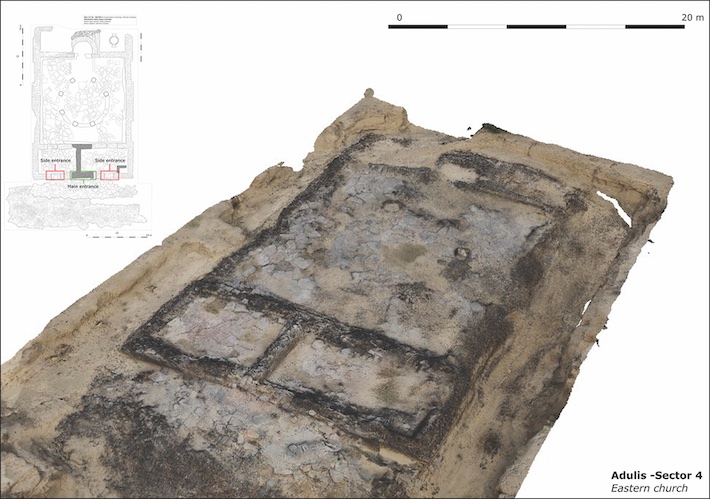 ADULIS, ETHIOPIA—According to a statement released by Cambridge University Press, Gabriele Castiglia of the Pontifical Institute of Christian Archaeology and her colleagues have examined and dated two Christian church sites in an ancient port city in the Kingdom of Aksum, which included parts of northeastern Africa and southern Arabia in the first millennium A.D. One of these early churches has a baptistry and may have been a cathedral. It was built in the large platform style identified with the Aksumite tradition, while the second church features a ring of columns indicating that it had a Byzantine-style dome. King Ezana of Aksum is known to have converted to Christianity in the mid-fourth century. The new radiocarbon dates indicate that the cathedral was built between A.D. 400 and 535, and the domed church was built between A.D. 480 and 625. Castiglia said that determining a precise chronology for these churches is key to understanding how the process of conversion to Christianity shaped the geographical and cultural area. The variety observed in the two churches suggests the religion’s spread was not the result of a single factor, such as a mandate from the king, she explained. Read the original scholarly article about this research in Antiquity. To read about excavations of an early Christian basilica at another site in Ethiopia, go to "Early Adopters."
ADULIS, ETHIOPIA—According to a statement released by Cambridge University Press, Gabriele Castiglia of the Pontifical Institute of Christian Archaeology and her colleagues have examined and dated two Christian church sites in an ancient port city in the Kingdom of Aksum, which included parts of northeastern Africa and southern Arabia in the first millennium A.D. One of these early churches has a baptistry and may have been a cathedral. It was built in the large platform style identified with the Aksumite tradition, while the second church features a ring of columns indicating that it had a Byzantine-style dome. King Ezana of Aksum is known to have converted to Christianity in the mid-fourth century. The new radiocarbon dates indicate that the cathedral was built between A.D. 400 and 535, and the domed church was built between A.D. 480 and 625. Castiglia said that determining a precise chronology for these churches is key to understanding how the process of conversion to Christianity shaped the geographical and cultural area. The variety observed in the two churches suggests the religion’s spread was not the result of a single factor, such as a mandate from the king, she explained. Read the original scholarly article about this research in Antiquity. To read about excavations of an early Christian basilica at another site in Ethiopia, go to "Early Adopters."
New Dates Obtained for Ethiopia’s Early Christian Churches
